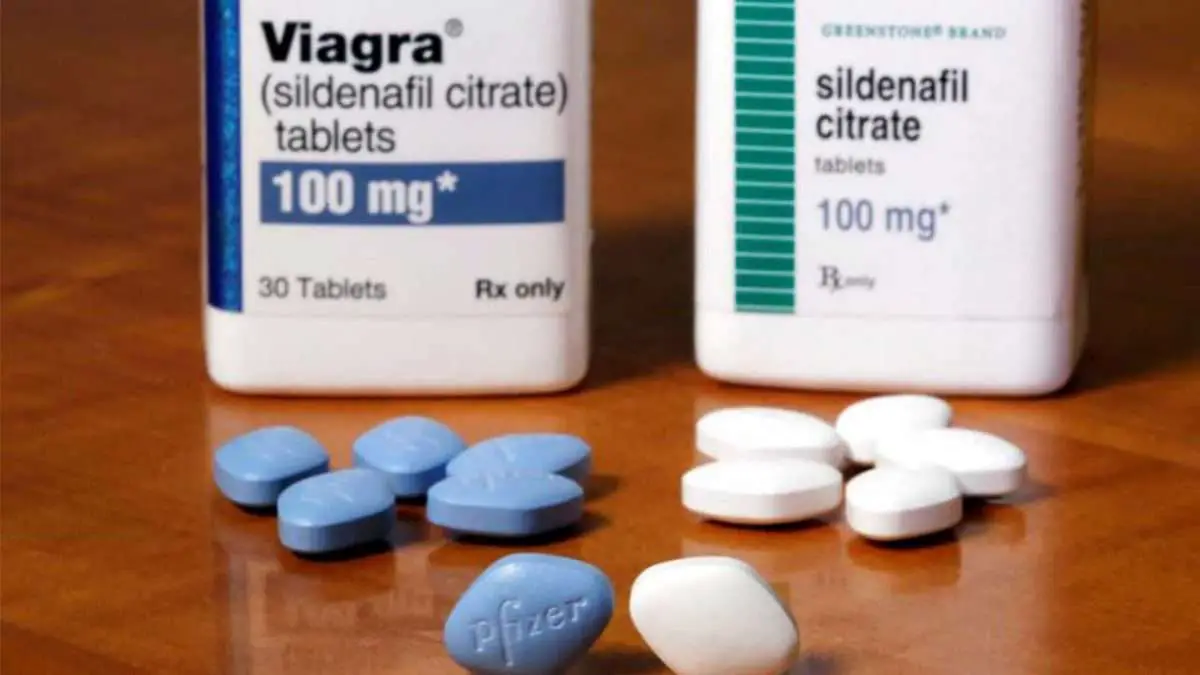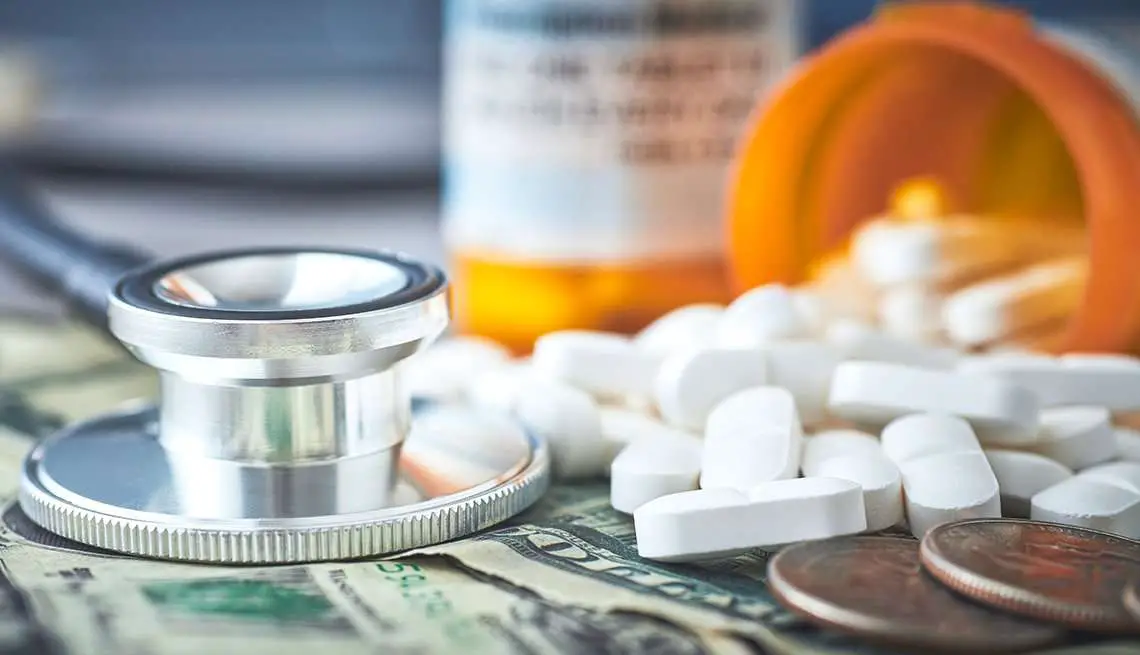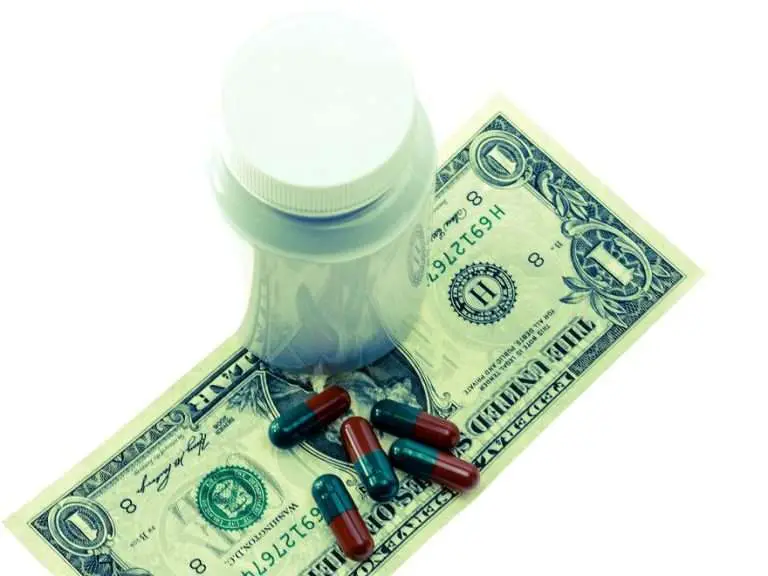What Is A Quantity Limit How Is A Quantity Limit Handled
A quantity limit may lower the number of drugs covered during a certain time period. Quantity limits put a limit on the use of certain drugs for quality and safety reasons. The quantity limit for each drug is supported by the Food and Drug Administration and/or by the instructions in the package insert. This program encourages safe and appropriate drug use. If a quantity limit is given to a drug, and the prescription is higher than this quantity limit, the local pharmacist will make sure the request is safe. If the higher quantity or dose of the drug is considered safe, a supply of up to fifteen days may be given. The provider will contact the Pharmacy Benefit Manager vendor to request approval for the larger quantity.
Medicaids Prescription Drug Benefit: Key Facts
Medicaid provides health coverage for millions of Americans, including many with substantial health needs. Prescription drug coverage is a key component of Medicaid for many beneficiaries, such as children, non-elderly adults, and people with disabilities, who rely on Medicaid drug coverage for both acute problems and for managing ongoing chronic or disabling conditions. . Though the pharmacy benefit is a state option, all states cover it, and, within federal guidelines about pricing and rebates, administer pharmacy benefits in different ways. After a sharp spike in 2014 due to specialty drugs and expansion under the Affordable Care Act , Medicaid drug spending growth has slowed, similar to the overall US pattern however, state policymakers remain concerned about Medicaid prescription drug spending as spending is expected to grow in future years. Due to Medicaids role in financing coverage for high-need populations, it pays for a disproportionate share of some high cost specialty drugs, and due to the structure of pharmacy benefit, Medicaid must cover upcoming blockbuster drugs. Policymakers actions to control drug spending have implications for beneficiaries access to needed prescription drugs. This fact sheet provides an overview of Medicaids prescription drug benefit and recent trends in spending and utilization.
What Other Medical Expenses Are Covered By Medicaid
Medicaid benefits are meant to pay for the basic healthcare needs of all qualified recipients. Apart from prescription drug coverage, Medicaid in all states pays some or all of the cost of emergency care, routine preventive care and overnight stays in the hospital. A co-payment or share of cost obligation may be required for beneficiaries who use these services. Medicaid programs across the country also typically pay for vaccinations, especially annual flu shots, non-emergency transportation and needed medical appliances. This includes many mobility devices and support garments, as well as home health equipment or supplies, such as oxygen.
Details of whats covered vary somewhat between states, so always talk to your doctor about medication and medical devices that affect your health, as well as about Medicaid cost structure for the things you need. Be aware that the law prohibits private billing of Medicaid recipients, so if you have Medicaid, you should not get a bill from medical providers. If this does occur, contact your provider or Medicaid worker as soon as possible.
Read Also: No Longer Eligible For Medicaid
How Do I Request Prior Authorization For Durable Medical Equipment Or Medical Supplies
The Texas Vendor Drug Program has a limited home health supplies list. That list includes many items like insulin syringes and test strips. You may get those at a local network pharmacy with a prescription. You may also get covered Durable Medical Equipment or Medical Supplies through a Superior HealthPlan provider. To request a prior authorization from the Superior DME Prior Authorization Department, call 1-800-218-7508 ext. 53227.
Trends In The Average Price Of A Prescription

Nationwide data on the average prices of prescription drugs are not readily available, but it is unlikely that the average net price of a prescription has increased considerably in recent years. Nationwide per capita spending on prescription drugs has generally held steady or declined since the mid-2000sother than the increase from 2013 to 2015whereas use of prescription drugs has most likely increased over that period. Further, a recent industry analysis shows that reductions in spending resulting from losses of exclusivity and generic pricing reductions nearly offset the growth in spending resulting from the entry of new drugs and price growth among other brand-name drugs.38
Changes in average prices in the Medicare and Medicaid programs also support that assessment. In Medicare Part D, the average net price of a prescription fell from $57 in 2009 to $50 in 2018. The decline was greater in Medicaid in that program, net prices fell from $63 in 2009 to $48 in 2018 .39
You May Like: How Do I Know If I Am Eligible For Medicaid
Nationwide Spending On Prescription Drugs
Since 1980, the share of nationwide spending on health care services overall that can be attributed to prescription drugs has nearly doubled, from about 5 percent to almost 10 percent in 2018. Through the 1980s and early 1990s, 5 percent to 6 percent of all spending on health care services and supplies was on prescription drugs obtained in the retail market . By 2018, that share was 10 percent . In comparison, the share of spending on health care services and supplies that was attributable to hospital services fell from 40 percent in 1980 to 31 percent in 2018, and the share attributable to services provided by medical professionals and in clinical settings was about 20 percent over that period.
What Is A Prior Authorization And How Do I Get One
A Prior Authorization is a request from your provider for Health First Colorado to cover a drug not listed on the Preferred Drug List or otherwise listed on Appendix P of the Preferred Drug List. Your provider will submit the prior authorization request for you. After your prior authorization request is reviewed you and your provider will find out Health First Colorado’s decision. If the criteria are not met, the doctor can re-submit with updated information, or appeal the decision to Health First Colorado’s Pharmacy Benefits section for further review.
Each request is processed within 24 hours, and most phone requests are given the approval/denial decision immediately upon submission. If you have an emergency, your provider can get a 72-hour emergency supply of the drug you need.
Colorado Pharmacy Call Center phone number: | Colorado Pharmacy Call Center Fax Number: 800-424-5881
Also Check: Doctors That Take Medicaid In Las Vegas
Can Medicaid Patients Pay Cash For Prescriptions Alabama Info
- https://alabamainfohub.com/can-medicaid-patients-pay-cash-for-prescriptions/
- Information on Medicaid Rules Surrounding Cash Payments for ⦠What about new prescriptions when the patient requests to pay cash? A. Encourage the prescriber to contact Idaho Medicaid at 208-364-1829. We will work with the.
Which Drugs Are Covered
Nebraska Total Care can cover these types of medication:
- Prescription drugs – The Preferred Drug List is a list of some of the drugs covered by Nebraska Total Care. A team of doctors and pharmacists update this regularly. They want to make sure the medication on the list is safe and helpful for you.
Read Also: Does Medicaid Cover Clinical Trials
How Has The Use Of Prescription Drugs Changed Over Time
Nationwide per capita use of prescription drugs has increased in recent years. Per enrollee use of prescription drugs has also increased in Medicare Part D and Medicaidfrom an average of 48 prescriptions per year in 2009 to 54 in 2018 in Medicare Part D, and from 7 prescriptions per year to 11 in Medicaid over that period. Increased use of prescription drugs is primarily associated with the increasing availability and use of generic drugs, along with the continued development of new treatments. In addition, the share of spending on prescription drugs that insurers cover has increased substantially: In 1990, consumers paid 57 percent of their prescription drug costs out of pocket, on average. By 2009, that share had fallen to 20 percent it fell further, to 15 percent, in 2018.
Information On Medicaid Rules Surrounding Cash
- https://bop.idaho.gov/wp-content/uploads/sites/99/2019/07/219_07_15_Medicaid_QA.pdf
- many of these patients continue to pay cash for additional opioids bringing their total daily MMEs in some cases to 2000 mg or more. · Idaho Medicaid is also concerned with issues of unrecognized opioid-induced hyperalgesia, diversion to non-Medicaid patients and the circumvention of Medicaidâs federally mandated prospective drug
Read Also: Blue Shield Of California Medicaid
Don’t Miss: Does Medicaid Cover An Iud
Idaho Medicaid Pharmacy Program
The goal of the Idaho Medicaid Pharmacy Program is to provide quality care to Medicaid participants with the most effective drug at the right price. Magellan Medicaid Administration, Inc. is the Idaho Medicaid Pharmacy Benefit Management contractor.
Idaho Medicaid Pharmacy call centerCall: 208-364-1829 OR toll free 866-827-9967 Fax: 800-327-5541
- For prior authorization status inquiries, call Magellan Medicaid Administration Pharmacy Support Center at 800-922-3987
Prior authorization faxMagellan Medicaid Administration Pharmacy Support CenterProvider line: 800-922-3987 Participant line: 888-773-9466
- Drug coverage and payment information
- Eligibility issues or inquiries
When Medicare Doesnt Pay A Claim In Full

In certain situationswith certain payersyou may be able to balance bill patients if their insurance company only provides partial payment for a service. However, that is not the case for Medicare beneficiaries. As WebPTs Kylie McKee explains in this blog on balance billing, if you accept Medicare or Medicaid patients, you must accept reimbursement from Medicare or Medicaid as payment in full. If you attempt to bill any Medicare or Medicaid patient for the remaining balance, it could land you in some major hot water, as youd be violating the terms of your Medicare Provider Agreementand you could even be subject to sanctions. In other words, what Medicare pays is what you get. That being said, if youre a non-participating provider, you can charge more than the Medicare-approved ratesup to what CMS dubs the limiting charge, Castin explains. But, you still have to issue an ABN and submit a claim to Medicare in order to collect any of the billed amount from the patient.
Read Also: Medicaid Health Insurance Income Limits
Does Medicaid Cover Prescription Eye Exams
Eye exams are an important part of vision health and therefore covered by Medicaid. Some types of eye exams may be covered under your standard health insurance plan.
Medicaid covers many types of eye exams, including exams for vision prescriptions. Eye exams covered by Medicaid include:
- Routine exams.
- Glaucoma screening.
Diverging Trends In Retail And Net Prices
The divergence between net and retail prices coincides with sizable increases in the rebates that payerssuch as commercial insurers and federal health care programsreceive from manufacturers. For Medicare Part D, the average rebate on a brand-name drug, as a fraction of its retail price, has more than doubled since 2009, increasing from 15 percent to 35 percent of the programs spending for brand-name drugs at retail prices in 2018. For Medicaid, the rebate percentage increased from 44 percent in 2009 to 63 percent in 2018. Recent research has found that, on a nationwide basis, average rebates for brand-name drugs have increased as well, from 32 percent in 2012 to 48 percent in 2017.1 In general, consumer cost sharing is not directly affected by those increases in rebates. Instead, rebates tend to be shared among all enrollees in a given plan through reductions in premiums.
Factors That Increase Rebates
How Rebates Affect Consumers Costs
1.See Pragya Kakani, Michael Chernew, and Amitabh Chandra, Rebates in the Pharmaceutical Industry: Evidence From Medicines Sold in Retail Pharmacies in the U.S., Working Paper 26846 , www.nber.org/papers/w26846.
2.That cap will be removed beginning on January 1, 2024, as a result of the American Rescue Plan Act of 2021 . For more information on the rebate cap, see Medicaid and CHIP Payment and Access Commission, Next Steps in Improving Medicaid Prescription Drug Policy , Chapter 1, pp. 115, .
Also Check: Oral Surgeons Columbus Ohio Accept Medicaid
Underlying Drivers Of Increased Use
The reduction in consumers out-of-pocket costs for prescription drugs is one key factor that explains the increased use of prescription drugs. In 1990, consumers share of spending on prescription drugs was 57 percent. By 2009, that share had fallen to 20 percent. It continued to fall thereafter, declining to 15 percent in 2018. That long-term decline is largely explained by a gradual increase in the share of spending covered by the Medicare and Medicaid programs, which grew from 13 percent in 1990 to 36 percent in 2018.23
Some of that increase is attributable to the creation of Medicare Part D in 2006. In that year, the share of spending covered by Medicare and Medicaid increased to 25 percent, up from 19 percent in 2005. That share has steadily increased since 2006. More recent increases were partly attributable to the increased generosity of the Part D benefit that was mandated by both the ACA in 2010 and the Bipartisan Budget Act of 2018, as well as to the Medicaid expansions that were encouraged by the ACA.24
The role of private health insurance in paying for prescription drugs has also increased since 1990. Its share of spending was 26 percent in 1990 and 44 percent in 2018, although the share covered by private health insurance was highest in the early 2000s, ranging from 47 percent to 50 percent. That share has since fallen.
How Do Drug Prices Affect Medicaid Spending
Drug list prices affect not only the reimbursement paid to the pharmacy in ingredient costs but also the amount of rebates the Medicaid program receives. Under the Medicaid Drug Rebate Program, Medicaid receives a rebate for prescription drugs reimbursed under the program. Rebates are calculated based on a share of the average price paid to manufacturers and include an inflationary component to account for rising drug prices over time. Thus, the larger the gross price of a drug and the faster the price increases over time, the larger the rebate that Medicaid receives. The rebate program substantially offsets Medicaid spending on drugs: In 2018, Medicaid spent $60 billion on drugs and received $36 billion in rebates.25 While gross prescription drug spending has increased substantially over time, rebates have held net spending growth to a much slower rate.
Because of the large role of rebates in reducing Medicaid drug costs, the drug with the lowest price is not always the drug that costs the least. Because generic drugs are usually lower-cost but still therapeutically equivalent to brand name drugs, most state Medicaid programs require generic substitution unless the prescriber specifies that the brand is medically necessary. However, there are some instances where, due to the structure of the rebate program, the generic drug is not the lowest cost drug to the program.
Read Also: Are Adults Eligible For Medicaid
What Are Recent Policy Initiatives In Medicaid Pharmacy Benefits
Both state and federal policymakers are undertaking efforts to control prescription drug costs. Much state activity in Medicaid pharmacy benefits is focused on the goal of obtaining greater supplemental rebates from manufacturers. Some states are focusing their efforts on high-cost drugs. State are also pursuing broader drug cost initiatives that have implications for Medicaid. At the federal level, the Trump Administration has proposed or undertaken a number of actions targeted at prescription drug costs, many of which have implications for Medicaid.29 Congress is considering a host of legislative proposals related to prescription drugs, such as action to make technical changes to Medicaid rebate rules. .
As policymakers move ahead with efforts to address Medicaid prescription drug spending, understanding the basic structure of the pharmacy benefit and recent trends can help illuminate potential direct and indirect effects, including those on access to care.
Box 1: Examples of State and Federal Actions onMedicaid Prescription Drug Costs
State EffortsNegotiate greater supplemental rebates from manufacturers:
- New York uses a spending growth cap, under which the state targets drugs with high or quickly-growing costs for additional supplemental rebates or strict utilization review.
- Other states, including California, are looking into leveraging purchasing power across state programs to obtain greater rebates.
Streamline the supply chain:
Focus on high-cost drugs:
When You Provide Medically Necessary Maintenance Care
As cash-pay practice owner Jarod Carter, DPT, explains in this post, up until 2013and the Jimmo vs. Sebelius casemost providers assumed Medicare would not pay for maintenance therapy, even if it was medically necessary. Thus, those providers got into the habit of charging patients out-of-pocket for maintenance services. Since then, Medicare has clarified that it does, indeed, cover maintenance care as long as it can only be delivered by a skilled, licensed therapy provider . So, what does this mean for billing? Providers must submit claims to Medicare for medically necessary maintenance carejust as they would for therapeutic care. Whether or not they can collect payment from patients depends on their contractual relationship with Medicare .
You May Like: Illinois Medicaid Open Enrollment 2020
How Medicaid Is Funded
Medicaid is funded by the federal government and each state. The federal government pays states for a share of program expenditures, called the Federal Medical Assistance Percentage . Each state has its own FMAP based on per capita income and other criteria. The average state FMAP is 57%, but FMAPs can range from 50% in wealthier states up to 75% for states with lower per capita incomes. FMAPs are adjusted for each state on a three-year cycle to account for fluctuations in the economy. The FMAP is published annually in the Federal Register.
As mentioned above, the CARES Act will provide additional funds to states for costs related to COVID-19.
How Do I Get A Nonpreferred Drug

Drugs are listed in groups called drug classes. Drug classes are made up of drugs that treat similar conditions. You must have tried and failed, or be intolerant to, at least two preferred drugs within the drug class, unless there is a reason you cannot or only one drug is preferred. The prescriber of your drug or your pharmacy will need to contact your health plan with this information.
Also Check: Can I Have Medicare And Medicaid Together
